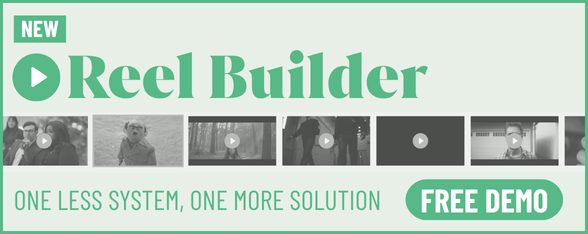
Why AI Will Liberate Creativity

On the second day of proceedings, Huge’s global chief creative officer Fura Johannesdottir took to the D&AD Festival stage this week with a bold claim: “Creativity has been suffering for 10+ years, especially in digital.”
Accusing the digital marketing space of becoming like a conveyor belt, where too many people follow best practices with little to no creative innovation or uniqueness, she said that one thing has the potential to put an end to this ‘copy-pasting’ culture. And that thing is artificial intelligence.
“AI is going to liberate creativity,” she said, addressing the packed crowd in London’s Shoreditch district. Since 2000, Fura has worked in the digital realm for the likes of R/GA, Publicis and now ’creative growth acceleration company’ Huge, and she seems to be impassioned by this new technological revelation, celebrating on stage how ChatGPT reached 100 million users in just three months.
“We came to this industry to reinvent,” she stated, “but we’ve been stuck making.” This is something she anticipates will change as AI pushes creatives to explore new possibilities and takes away parts of their jobs. In isolation, AI taking away roles and responsibilities can be a terrifying proposition, but Fura doesn’t see it that way.
“I think that’s great news, actually,” she said, “I think that’s fantastic because it means we need to rethink what we do and how we do it.”
In fact, she went as far as to compare the dawn of AI in the creative world to three monumental moments in human history: the industrial revolution and the inventions of the camera and the internet. “It’s going to be bigger than all of them,” she hypothesised, saying, “It is going to liberate us… we have been stuck for a while. We should all be a little bit afraid, we have no idea what shape this will take, we have no idea what possibilities are out there, but we should also be excited."
Describing the AI-infused future as an opportunity to be “productively creative”, she said that the industry will have to rethink its processes, allowing “conveyor belt work” to be done by the machine, thus freeing up time for innovation and true creativity from the humans. “We’ll never have to design a banner ad or a checkout process again," she laughed.
Showing an example of the work Huge has already done with AI, Fura showcased the campaign for Pantone’s ‘Colour of the Year’ - playing a case study that explained the project’s animation, Samsung phone design collaboration and 10,000 square-foot installation at Art Basel Miami that all utilised generative AI software to great effect. “We'd never have been able to do this without AI,” she said, adding how the image creation itself, as well as the speed at which it was created and the iterative process that the AI offers, would have been “impossible without the technology."

Among other benefits, Fura listed AI’s ability to discover and relay data insights faster as a key advantage, predicting that AI tools will allow creatives to predict and model the effectiveness of a project sooner than ever before. She also highlighted AI’s capability to explore, illustrate and scale ideas at speed, which she said will “enable the easier sale of your ideas”, as clients will be able to visualise the final product in a more tangible way.
All of this, and in record time.
“And then,” she said, “this will free up your time to be more innovative again - that’s what I’m most excited about. I want to go back and get better than we used to be. I want to see us discovering and making something new that has an impact in the world.”
So with the role of the creative set to change, in Fura’s eyes, who are the creatives that will adapt and survive? “Passionate creatives who live what they do will always survive," she said, suggesting that “those with vision and intuition at their core" will change with the times and roll with anything that the industry throws at them.
She concluded the presentation discussing Huge’s five key principles for using generative AI, which emphasised again the importance of working with, and for, humans, considering AI’s innate lack of emotional intelligence. The other guiding points included the need for transparency (for clients and consumers alike) as to the use of AI on specific projects and the closing principle that called for AI to be used to create a ‘better’, not simply a ‘faster’, future.

“This is one of the most exciting points in time to be a creative," she said, concluding the talk. “AI will push us to be better creatives, there’s no doubt about it. It’s going to put the pressure on, the pressure that we need to perform better, to challenge ourselves more. I’m not saying there isn’t great work out there - there’s excellent work out there. I’m just saying that we need more of it, and AI will push us to do that.”
“If you really lean into this, you can be the most creative you’ve ever been. It’s an opportunity to reshape the world and how we live in it.”















